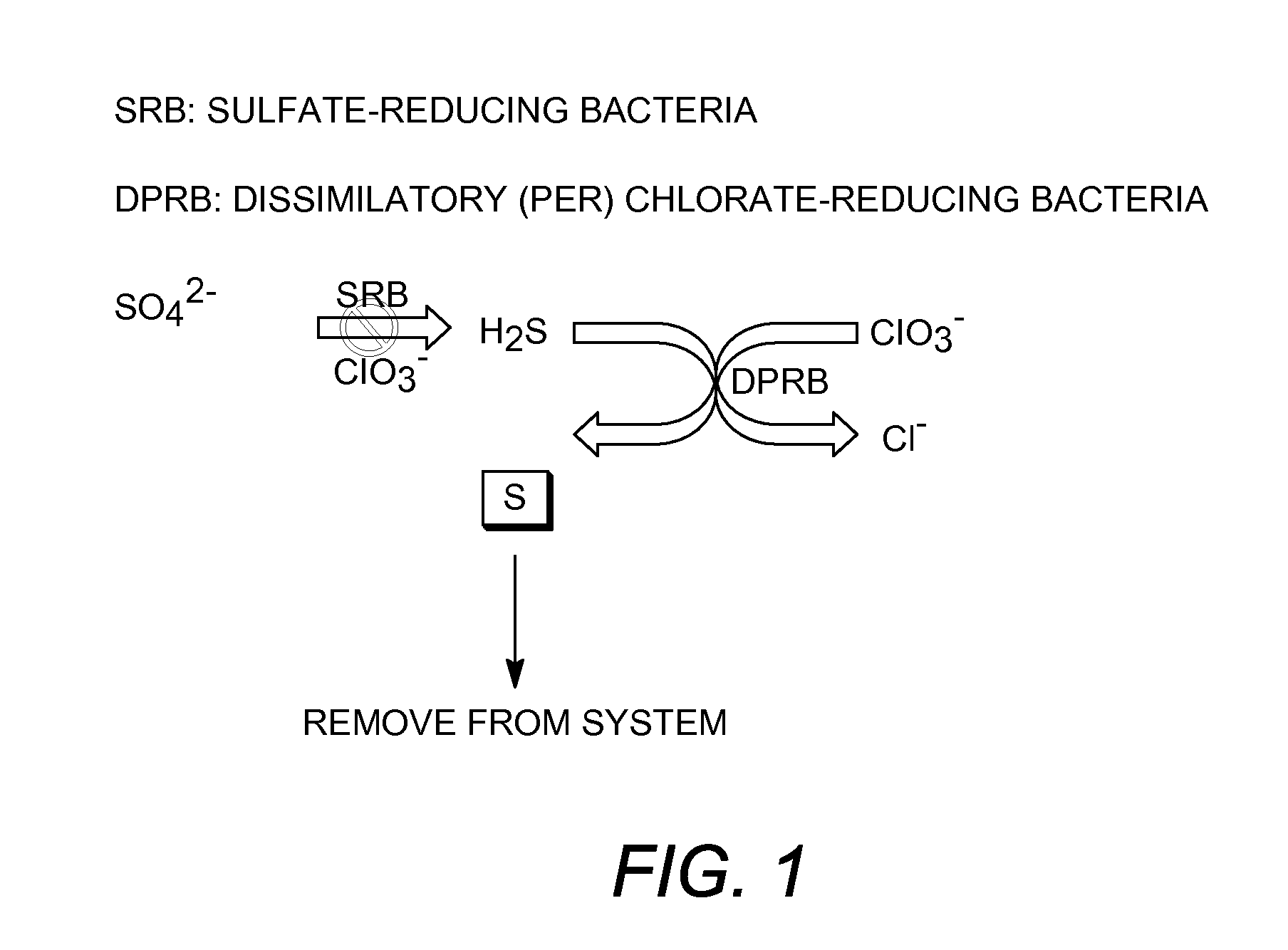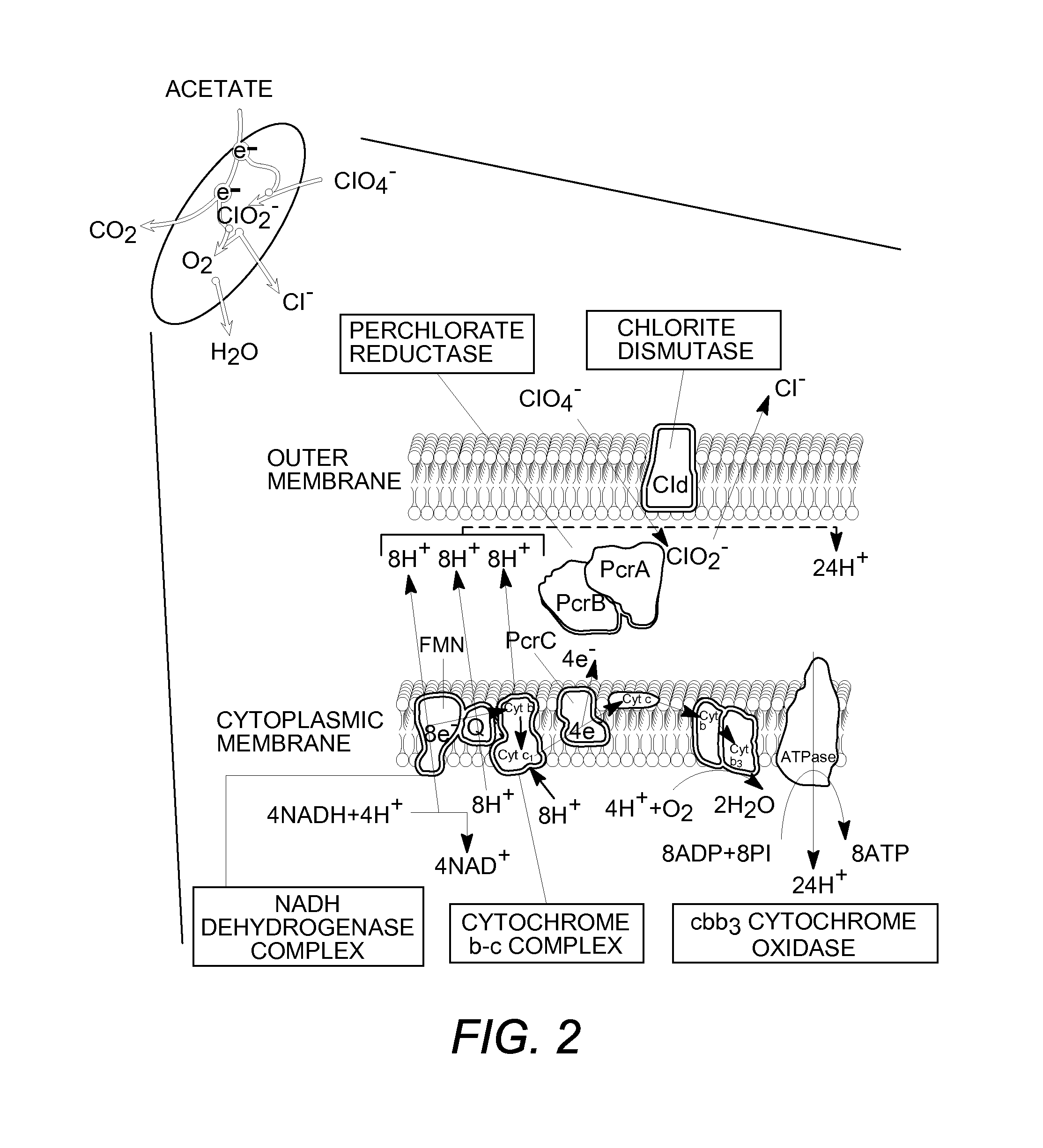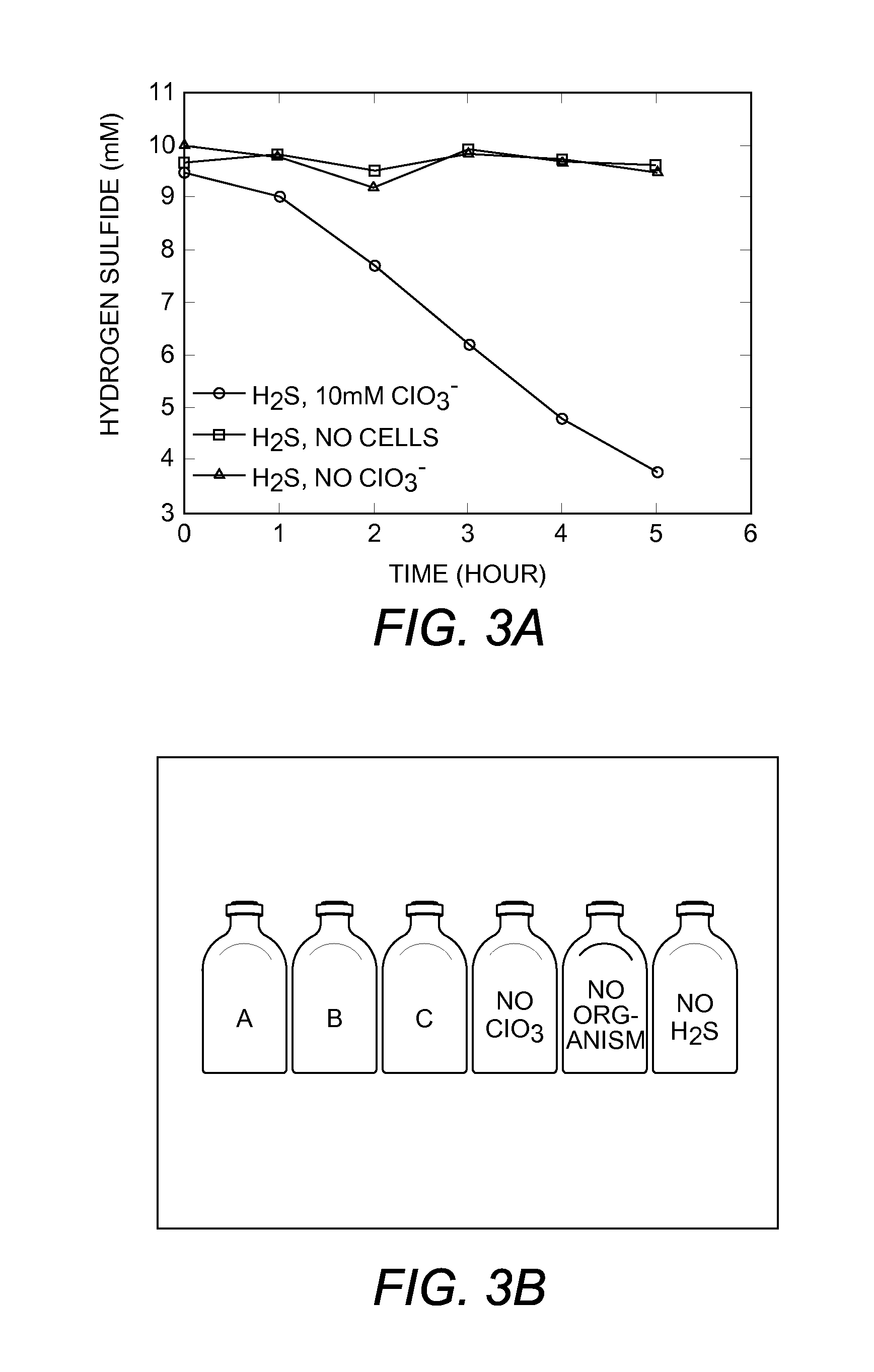Microbial metabolism of chlorine oxyanions as a control of biogenic hydrogen sulfide production
- Summary
- Abstract
- Description
- Claims
- Application Information
AI Technical Summary
Benefits of technology
Problems solved by technology
Method used
Image
Examples
example 1
Characterization of Dechloromarinus Strain NSS
[0106]A chlorate-reducing organism Dechloromarinus strain NSS was isolated from hydrocarbon-contaminated harbor sediments collected from the Naval Station San Diego Bay, Calif. Strain NSS grew optimally at 30° C., pH 7.5, in 4% NaCl (mass per volume) salinity. However, growth was observed at up to 40° C. and a salinity of 10% NaCl (mass per volume). Phenotypic characterization revealed that in addition to chlorate, which was completely reduced to chloride, strain NSS could alternatively grow anaerobically with nitrate. Strain NSS could utilize a range of simple organic acids and alcohols as alternative electron donors. In addition, Dechloromarinus strain NSS also utilized Fe (II) or H2S coupled to the reduction of chlorate.
Oxidation of Sulfide to Elemental Sulfur
[0107]Cells of Dechloromarinus strain NSS were grown anaerobically in 1000 mL of medium containing acetate as the electron donor and chlorate as the electron acceptor. After the ...
example 2
Inhibition of Sulfate-Reducing Bacteria (SRB)
[0111]To demonstrate the inhibition of microbial sulfate reduction, active cells of the sulfate reducing species Desulfovibrio vulgaris were incubated with the (per)chlorate reducing species Azospira suillum. Twelve tubes of basal anaerobic medium containing 15 mM lactate and 15 mM sulfate were inoculated with an active culture of D. vulgaris and incubated for 6 hours at 30° C., until a visible increase in optical density was observed. After six hours, the tubes were further inoculated with A. suillum and 15 mM chlorate prior to incubation overnight at 30° C., as outlined in Table 2.
TABLE 2Experimental tube treatmentTube NumberD. vulgarisA. suillumChlorate1-3YesYesYes4-6YesNoYes 6-10YesNoNo11-12NoYesYes
[0112]The results indicated that sulfate reduction to sulfide was significantly inhibited when lactate was used as the electron donor. Additionally, after the 24-hour incubation with A. suillum and 15 mM chlorate, sulfide production by D. v...
example 3
Comparative Analysis of the Genomes of Four Species of Perchlorate Reducing Bacteria
[0115]A comparative analysis of the genomes of four perchlorate-reducing organisms has revealed a genomic island associated with perchlorate reduction. In addition to the characterized metabolic genes perchlorate reductase and chlorite dismutase, the island contains multiple conserved uncharacterized genes possibly involved in electron transport and regulation.
[0116]The two key genetic components of the (per)chlorate-reducing mechanism pathway are perchlorate reductase and chlorite dismutase, encoded by the perABCD and cld genes, respectively (21, 23, 28, 43).
[0117]The first (per)chlorate-reducing organism to have its genome sequenced was Dechloromonas aromaticae strain RCB (26). Recently, draft genome sequences for the perchlorate-reducing organisms Azospira suillum strain PS (20), Magnetospirillum bellicus strain VDYT (42), and D. agitata strain CKB (20, 24) have been characterized (DOE Joint Genom...
PUM
| Property | Measurement | Unit |
|---|---|---|
| Concentration | aaaaa | aaaaa |
| Ratio | aaaaa | aaaaa |
| Content | aaaaa | aaaaa |
Abstract
Description
Claims
Application Information
 Login to View More
Login to View More - R&D
- Intellectual Property
- Life Sciences
- Materials
- Tech Scout
- Unparalleled Data Quality
- Higher Quality Content
- 60% Fewer Hallucinations
Browse by: Latest US Patents, China's latest patents, Technical Efficacy Thesaurus, Application Domain, Technology Topic, Popular Technical Reports.
© 2025 PatSnap. All rights reserved.Legal|Privacy policy|Modern Slavery Act Transparency Statement|Sitemap|About US| Contact US: help@patsnap.com



